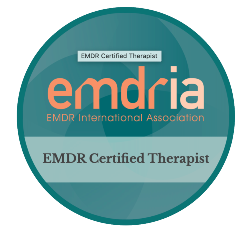Dispelling Myths About EMDR Therapy
Many EMDR (Eye Movement Desensitization and Reprocessing) therapists receive calls each week from potential clients who have heard about EMDR therapy, but have received misinformation about what it is and how it works. There are myths about EMDR floating around related to the duration of the therapy, the way the therapy is conducted or the types of issues it resolves that bring people in to try it. Although there is much truth to what people have heard, there is also some clarification that is warranted to truly understand what EMDR therapy is and is not. T
Myths about EMDR: “How many sessions of EMDR will I need?”
This is the magic question that many people want to know when they first call, and to which every therapist wishes they could give a specific answer. But if the therapist is really leveling with you, they will tell you they don’t know how long—at least not yet. EMDR therapy truly is a remarkable and thorough therapy, that has the potential to reduce the overall time needed in other forms of therapy.
By addressing the root cause of problems, or the center of a traumatic event, and applying back and forth eye movements while thinking about the trauma and associated thoughts, therapists get miraculous results treating their clients—but, the length of the treatment varies dramatically, depending on the issues being addressed.
Eye movements stimulate a myriad of happenings in the brain that ultimately facilitate the re-organization of traumatic or disruptive memories and self-beliefs. For single incident traumas, in a person with a stable background and healthy relationships, EMDR could last for only a few sessions. However, if there is a history of trauma, stressful early relationships or conflict and developmental disruption, the EMDR therapy could take much longer—in some cases many months.
Myths about EMDR: “Can we start the EMDR on Day 1?”
Another of the myths about EMDR is that EMDR starts during the first session. EMDR therapy does start the minute a client walks in the door, but that doesn’t mean you are doing any of the eye movements or actual processing that day. EMDR is a lens through which the EMDR therapist conceptualizes treatment and is dictated by the over-arching Adaptive Information Processing model of therapy. So, the work to create healing and to lead up to the processing portion of the treatment, begins right away with the therapist working to create trust in the therapeutic relationship, understand the issues for which the client is seeking treatment, the development of those symptoms, and to build stabilization in the client. The therapist will need to ensure those things are in place before proceeding to the processing, and so the time may vary for each client and typically doesn’t start until at lease a few weeks into the therapy, and in some cases not for a few months. (See the paragraph above.)
Myths about EMDR: “I heard I don’t have to say anything during EMDR therapy.”
Some clients have heard they can do the eye movements and processing but not tell the therapist what is happening or what they are thinking about. Although the therapist doesn’t need to know every detail of what comes up during the processing, they do need to get a brief report after each set of eye movements so that they can manage the processing appropriately and ensure that the memory is being processed effectively and thoroughly.
Myths about EMDR: “I want EMDR so that I can remember what happened.”
Although EMDR therapy does often bring up information that was stored in implicit memory (non-declarative memory, or memories that we store but can’t recall at will), these memories don’t always surface in vivid detail, and sometimes only surface in the form of feelings, beliefs, or physical sensations. So there is a possibility that clients may remember a specific experience that they had forgotten or suppressed, but it is not a certainty that those details will emerge in the form that they may hope for or expect. That all said, regardless of whether or not the details emerge, the memories can still be processed effectively so that they are stored in a more adaptive, healthy way.
Myths about EMDR: “EMDR is only for PTSD”
EMDR is great for PTSD, and is an evidence-based treatment for PTSD, but that is not the only mental health issue that it helps. EMDR therapy can be used very effectively with depression, anxiety, grief, phobias, dependence and more. The fields of psychology and neuroscience are fast changing with constant emergence of new research. The more we learn, the more we discover new applications for EMDR therapy.
Although there are many myths about EMDR, it is a powerful form of therapy that can create deep and lasting resolution from difficult and traumatic experiences. Each client treated with EMDR therapy is unique and comes to the therapy with different circumstances and early attachment and developmental experiences. As a result, the experience of the EMDR therapy will be unique to each person, even though the results of the treatment, a shifting of trauma triggers and maladaptive behaviors over to more adaptive ways of feeling, behaving and experiencing, are common among clients.
Tamra Hughes, MA, LPC, EMDRIA Approved Trainer and Consultant





